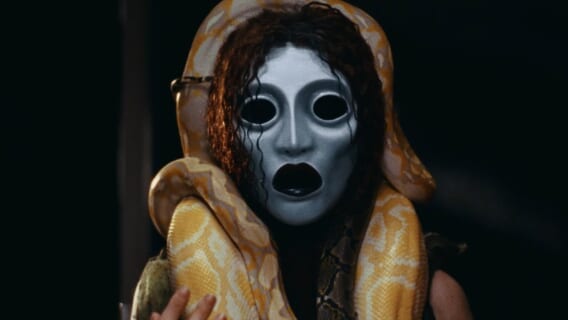
When filmmaker Travis Stevens debuted his film Girl on the Third Floor at SXSW in 2019, it immediately got people talking. Both written and directed by Stevens, the film’s strong visuals, unlikeable lead, and unexpected third-act choices proved to ruffle feathers and garner fans in equal measure. Soon followed by Jakob’s Wife, starring indie staple Larry Fessenden and horror icon Barbara Crampton, Stevens quickly cemented himself as an exciting new voice in horror. Now, with his new Shudder Original film, A Wounded Fawn, Stevens further displays his strong voice and penchant for bold, boundary-pushing storytelling.
In A Wounded Fawn, Sarah Lind (WolfCop) stars as Meredith, an art museum curator who agrees to a weekend getaway with her handsome new “love” interest, Bruce. Portrayed by the multi-hyphenate talent Josh Ruben (Scare Me), Bruce whisks Meredith off to his stunning and not-at-all-rustic cabin. Casually dropping red flags left and right, Bruce soon shows Meredith his true serial killer colors in all their psychedelic glory. Juxtaposed with some Greek mythology, high art, and Stevens trademark visceral visuals, A Wounded Fawn is a trip from start to finish.
Fully leaning into the high concept, striking aesthetic and dark quirkiness of the story, Stevens knew the film would need a score that could keep up. And just like a modern-day fairytale, the ideal musical match magically appeared within Stevens’ own Instagram DM’s. A fan of Stevens’ work, Los Angeles-based Swedish composer, producer, and musician VAAAL reached out to the filmmaker after falling head over heels for The Girl on the Third Floor. Continually driven by sound, experimentation, and technology, VAAAL’s sonic palette and skillset perfectly partnered with the film’s surreal, palpable atmosphere and vibe.
Swept away by VAAAL’s beautifully tactile soundscape, Dread Central recently sat down with the composer to learn a bit more about the magic and wizard behind the curtain.
Dread Central: You have been heavily involved with music for a long time, but you have only recently started composing for film. How did A Wounded Fawn get on your radar? And how was this wild story pitched to you?
VAAAL: I [got] to know Travis over Instagram after his first two movies and really admired his work. I made sure he knew that I’d love to work with him in the future, and after they had finished shooting this film, he reached out to me and asked if I wanted to do the score for it. That was one of the best days ever. It was so exciting. He sent me the script, and I read through it right away. I was just mind-blown [by] all the twists and turns that this film takes. It also felt immediately like, “Ok. I can’t ask for a more perfect project for me personally to work on.” It just ticks so many boxes for me — the big swings and all the surrealist art inspiration. It was just super cool.
A couple of weeks later, I got to see the first rough cut. I’d call that one of the craziest experiences that I’ve ever had. [For] that first rough cut, he actually used my album music, like my solo music, as the temp music for it. So that was even weirder. To see this movie I would be very excited about whether or not I’m scoring it, but to actually see it for the first time with my own music was really trippy. So I mean, he didn’t really need to pitch me much. I was down basically right away.
DC: A Wounded Fawn is so visually engaging that the music could have gone in many different directions. How did you first approach shaping the music for this story? What were some of the initial ideas or vibes you and Travis were discussing?
V: Well, one of the first things that we talked about [were] these Japanese horror movies from the 60s — Onibaba and Kuroneko. They both have this very percussive and minimal approach with jarring, percussive sounds. That was something that Travis had pointed out in my own solo music too, that he felt reminded him of that. That was definitely something that he wanted to infuse into this movie.
I’ve always been a fan of that era of Japanese cinema, so that was one aspect that I nerded out on at first. Especially those scores, as well as more modern takes on it. Like, Hannibal Season Two, for instance, has a very Japanese music-inspired score that’s just creepy as hell. [That] was basically one of my first inspirations to start the VAAAL project. It made me realize that “Oh, you can make music that’s this scary and weird and textural.” That was one of the approaches for it because [the film] has so many different influences.
The next one was to use the female voice—specifically, three female voices. If you’ve seen A Wounded Fawn, you know what that represents. So I took three singers, one of them being my wife and two of her singer friends. We did this amazing recording session where I cleared out some space here in my studio, and I set up two stereo mics in the middle of the room. Then I directed them to walk in circles or spin in place while they were singing this controlled randomness of notes. And as they were walking in front of these microphones, it created a very swirly and atmospheric sound.
I then had this folder of sounds from these recordings that I would actually play through my iPad later with something called granular processing or granular synthesis. The basis for that is, basically, you can take any sound and break it up into a million little pieces. The software then assembles it back together but is nonlinear. So, it’s everywhere all at once, basically.
It sounds super cool and strange and very ghostly. It just fits that aspect of the movie so well. It’s something you can hear throughout the entire score. I’m really happy with how that came together, and I’m so grateful that I got to do these recordings, experiment, and do all this crazy stuff. Because I had them screaming and whispering and hollering. [Laughs]
DC: I have to imagine that it was fun for them to let loose and let it all out.
V: It was a very energetic day. We were all just so beat after that recording session. The result was amazing, and I felt really good about it. It gave it this little bit of extra. I mean, because female vocals [are] nothing new in horror films. It’s pretty much a trope by now. But I felt like, in this case, it was so fitting, and I wanted to see what my version of that would be and see if I could make something semi-new that sounds interesting.
DC: I think you succeeded! I haven’t heard anything quite like it. On that note, I’ve also never seen films that feel quite like Travis Stevens’s films do, either. There’s always some aspect that feels very visceral, gooey, or tactile. I thought your music supported that trait well. Tell us about how you embraced that and the experimentation that led you there.
V: First of all, thank you so much for saying that. I really worked my ass off on this score because of how passionate I was about it. There were so many different things that I used in it, but I wanted to try and stay away from the computer as much as I could, at least.
One of the most important and distinct instruments in the score was…let’s see. I actually have it right here. [Holds up a small wooden box with various metallic protrusions attached to the top] It’s this home-built instrument that I call the Evil Gurkha by VAAAL. It has a little microphone inside, and you can open it up to get different tones.
You can play it in many different ways, but my main way of playing, especially in this score, is with a violin bow. So you actually bow these brass strips that are attached with hardware to the box, and it just sounds…eerie. [plays a short sample that does indeed sound eerie] Usually, it’s mic’d up, and you have some effects and stuff on it, but you can get some really amazing and creepy tones out of it. So that was a big aspect of the score.
I also played a bunch of flutes. Flutes are very common in Japanese film scores, so I wanted to do my take on that. Unfortunately, I didn’t have any Japanese flutes to play with. I’m also not a flutist, really, but I can fake my way through. And especially when it’s a score like this that is supposed to be kind of atonal and chaotic, it doesn’t have to sound pretty or nice.
DC: I wanted to ask you about the mysterious Red Owl that Bruce sees. It’s a very ambiguous presence, and the score does a lot of the heavy lifting as far as how the audience perceives him. How did you approach this scoring this rather vague entity and translate that to his ultimate sound?
V: So that Owl, it was a tricky one. It needed a very specific atmosphere, one that I couldn’t fully put my finger on what that even would be. But I knew that I wanted it to be seductive sounding. For Bruce, this Red Owl it’s almost comforting to him. So it needed to have this lure aspect to it where it is kind of enticing while also being cold at the same time.
For that, I used this really old Moog synthesizer from the early 80s that I got to borrow from The Crystal Method, an electronic artist whose album I worked on last year. He’s kind of become my synth godfather since then, and he keeps just letting me borrow these amazing vintage synthesizers from his collection. The Memorymoog in this case was the perfect instrument for the basis of this cue.
They’re also kind of infamously known for being very unstable. It’s wonky with all the components going in and out of tune. It just has this amazing, very alive sound that’s also kind of grainy. It sounds the way the movie feels to me. So that was the perfect sound for that composition.
Then after I had that, I had a friend play a bunch of horns and brass on top of it. He played trombone, french horn [and] trumpet. I actually had another brass player play some tuba on it as well. It just gave it this weird 70s sexy, sleazy vibe that’s also hypnotic and slow-motion sounding. It was important for that cue when those scenes happen where we see the Owl, it’s almost like all the air in the room gets sucked out. There are no other background sounds, and Bruce goes into this trance. Then that’s when he does what he does.
DC: You clearly love films, and it sounds like you had a great experience scoring this one. Do you think you’ll continue to score films? How does film scoring fit into your big-picture career goals for yourself?
V: I work on a lot of different types of music. Everything from top 40 pop to experimental death metal, film scores, and everything in between. And obviously, a lot of electronic music too. But right now, I feel like film scoring is definitely my main priority. That’s where I feel I get to utilize all the stuff that interests me and inspires me.
I’ve actually done another short film that Josh Ruben produced. I scored that almost right after the festival premiere of A Wounded Fawn. And I’m currently about to start another feature length, but I can’t really say much more about that project right now. I do think it’s going to be cool, and it’s going to be a very different approach from A Wounded Fawn. I’m really excited to create a whole different type of soundscape. Hopefully, this will continue rolling. As many weird horror movies as I can make, I will definitely jump on right away.
DC: Yes, please! Are you a fan of the genre outside of working with it?
V: Oh, yeah. I feel like I grew up with a VHS horror collection in my hands. Basically, from a very, maybe a little too young of an age. It’s always been very comforting to me, and the openness to experimentation in it. It’s just one of the best mediums, and it has the best fans, too. I just love everything about it.
DC: Do you remember some of those early horror movies that got you hooked?
V: Yeah, of course. I mean, The Shining.
DC: That’ll do it!
V: I think I saw that when my parents had taped it on home VHS when it had aired on TV or something. I ended up watching that when I was six or seven. Maybe against their knowledge. [Laughs] Of course, they would not have let me watch that. That was a really intense experience.
A Clockwork Orange was shortly thereafter. So I guess, lots of Kubrick. That’s not even technically a horror film, but that was the first time I was speechless after watching a movie. I’ll never forget that moment. The subject matter in that is just so dark and hopeless. I have a distinct memory; right as the end credits rolled, someone rang our doorbell. It was my neighborhood friend who was like, “Hey, you wanna come out and play?” And I was like, “No. I can’t. I’ll talk to you tomorrow.” Just blank in the face. I had to close the door to continue processing. That stuff was influential, and it led me to a lot of Italian zombie movies of the 70s with Lucio Fulci stuff, of course, Romero, and all of that. I’ve been going ever since.
A Wounded Fawn is currently streaming exclusively on Shudder. Additionally, VAAAL’s score for the film is now available to stream on all major streaming platforms.





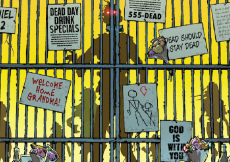
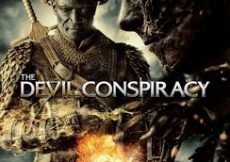
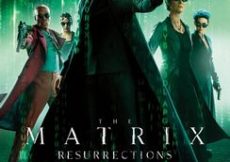
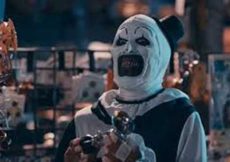
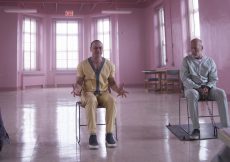
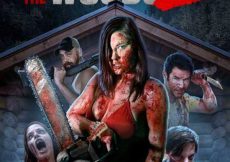

















:quality(85):upscale()/2023/05/11/976/n/1922564/782262e2645d6b967847b4.74342194_.png)








